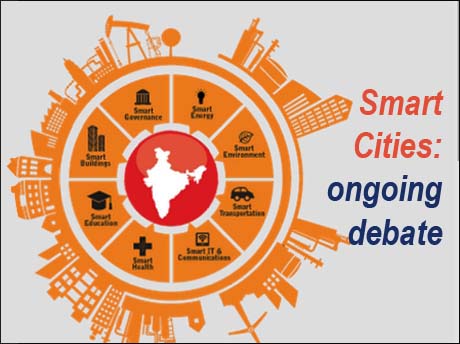
Bangalore, April 30 2015: A report from global real estate consultancy Cushman & Wakefield, released at a recent conference on smart cities held in Delhi identified , five crucial elements that need simultaneous growth to ensure that India is able to create ‘Smart Cities’ according to plan. These are Power, Infrastructure, Funds, Technology and Social Capital.
The urban population in 2031 is expected to increase to 600 million. Smart cities propose a solution to mitigate the problem of urbanization. They integrate Information and Communication Technology (ICT), energy efficiency and sustainability to support future generations.
The report says irrespective of the categorization, all smart cities integrate ICT into different components. These components include, Energy, Transportation, Smart Buildings, Governance, and Social Infrastructure. However the scope and extent of this integration and application may greatly vary between cities.
Says Sanjay Dutt, Executive Managing Director, South Asia, Cushman & Wakefield: “The government plans to develop 100 smart cities over the next 20 years which will require the government to look at New cities, satellite towns near megacities, up gradation of mid-sized cities as well construction of settlements along industrial corridors will be undertaken, as part of this initiative.”
OTHER THOUGHTS ON SMART CITIES
Neelam Dhawan, Vice President & General Manager, Enterprise Group and Country Managing Director, HP India
As the development of Future Cities in India becomes a priority, it is vital for the government to strike a balance between resource allocation, investment in infrastructure and improving delivery of services to citizens through the effective use of technology. HP’s solutions for Big Data, Cloud, Mobility and Security can lay a foundation that allows governments to become more efficient, drive economic growth and create sustainable communities. Ultimately this will help them improve quality of life for its citizens.
Sanjiv Kataria, strategic communications counsel
A WHO study shows 13 of the 20 most polluted cities in the world are in India, including the worst-ranked Delhi. India has the highest death rate caused by chronic respiratory diseases in the world. By focussing on just the brick and mortar smart cities, India could well ignore the health consequences of air pollution.
Indian cities don't have the best and the widest roads. Yet India adds over 5,000 cars a day to its city roads adding to pollution, congestion and long commute time to work and back. An efficient transport system in the top 100 cities, with a smart travel card allowing people to move seamlessly between buses, Metros and shuttle services, may be the answer.
We also need to build roads that are pedestrian-friendly and cycle-friendly, just as Vienna and many other European countries have, where differently-abled and the wheelchair borne are not disadvantaged. We need pothole-free levelled sidewalks that help smooth and safe travel for pedestrians before we get smart cities.
India needs more habitable cities that show strong commitment to sustainability before we get the smart cities
India is entering into an “era of engagement” which will be the engine of value creation to the country and its people. With this, the Government of India has come up with innovative initiatives like the Digital India, Smart City and Make in India initiatives. With these initiatives the government is aiming to bring the following changes:
Jean Turgeon, VP & Chief Technologist, Software Defined Architecture, WW Sales, Avaya:
India is entering into an “era of engagement” which will be the engine of value creation to the country and its people. With this, the Government of India has come up with innovative initiatives like the Digital India, Smart City and Make in India initiatives. With these initiatives the government is aiming to bring the following changes:
Digital India: country – wide fiber optic country by 2016; digitization of government services
Smart cities – 2500 Wi-Fi enabled cities over 3 years and providing services to education, healthcare, financial
Make in India initiative – sustainable growth and boost in the country’s overall exports
I have been pleasantly surprised with some areas in India where some applications have been developed to provide instant location services as the person in crisis dials for emergency. This means some systems have already established both a voice and data channel, allowing location to be immediately sent to a central command, as the individual dials for emergency. This is very positive to see, but, as you can imagine it is not broadly implemented in all countries. Some are clearly lagging behind.